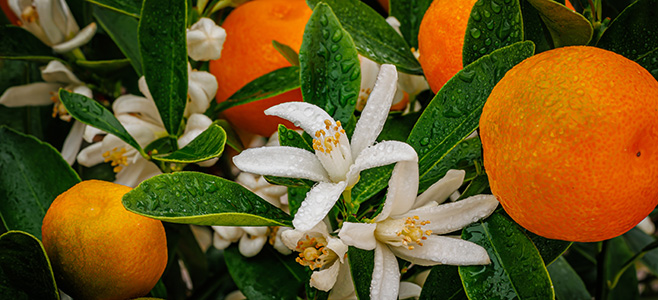
Find out if a calamondin tree is right for your Yarden with this informative overview.
Name: Calamondin vs. Calamansi
This tree has many colloquial names, which can sometimes cause confusion. In the United States, this tree and its fruit is typically called calamondin, which is an Americanized version of the Tagalog word, kalamunding. Calamansi, which is the Philippine English spelling of the Tagalog word kalamansi, is widely used in the Philippines. They are both the same tree/fruit and can be used interchangeably. The fruit is also sometimes called a Philippine lime, lemonsito, golden lime, bitter-sweets, and acid orange.
Origin
While calamondin trees most likely originated in China, they were distributed early and widely to the Philippines and other parts of Southeast Asia and have become synonymous with the Philippines. Tagalog is a language native to the Philippines, hence the origination of the name calamondin/calamansi. Calamondin trees are a natural hybrid of kumquat and tangerine.
Growth
Calamondin trees are small, bushy evergreens that can grow to be 10–20 feet tall when planted in the ground but can be kept smaller if grown in a container or pruned. Calamondin trees mature quickly and can produce fruit in two years. However, young plants use a lot of energy to produce fruit, so it’s recommended to thin them out in the early years to encourage fewer but larger fruits.
Fruit
The calamondin tree produces a citrus fruit that looks similar to a small, round lime. It has a thin peel that can be green or tangerine colored. While the fruit has a sour/acidic taste, the peel is sweet. Calamondins are a great source of vitamin C and D-limonene, and they can be used in cocktails, baked goods, sauces, marinades, and more.
Care
Calamondin trees are cold hardy and can tolerate temperatures as low as 20 degrees F. However, they do not grow well at temperatures consistently below 55 degrees and prefer a range of 70-90 degrees. They require at least six hours of direct sunlight daily to produce their best blooms. They prefer slightly acidic, well-draining soil that is rich in organic matter. You can add composted leaves or glass clippings to your ground soil for this. If you are growing in a pot, add perlite and coarse sand to your potting soil to improve drainage. Pruning is best done in late winter or early spring before new growth starts. Remove dead wood, such as brown, dry branches, to allow more energy for healthy growth.
Our citrus tree care kits make it easy to ensure optimal growth of your calamondin tree.
Harvesting
In calamondin’s native countries, harvesting is usually done when the skin is green (unripe), as they are frequently used similar to limes. They will be especially acidic and tart at this point. If you would like to eat the fruit, wait to harvest until the fruits are firm and yellow to yellow-orange in color. While calamondin fruit is technically ripe when it is soft and orange in color, it takes nearly a year to reach that point and harvesting it earlier by the above conditions gives it a better flavor.
Never pull the fruit directly off the tree by hand! Because of their thin skin, this can tear off a small chunk of skin that remains attached to the stem and the fruit will not store as long. Always use scissors or pruning shears to cut them off the tree just above the stem attachment, so a small piece of stem is still left on the harvested fruit. Calamondin can last 3-7 days at room temperature. To prolong their life to around two weeks, seal freshly harvested fruits in a ziplock bag and place it in the veggie drawer of your fridge.

